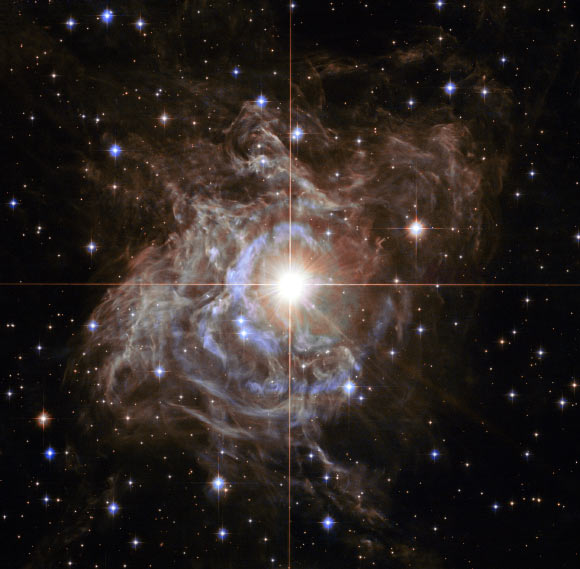Hubble Catalog of Variable Sources Released | Astronomy – Sci-News.com
Using data collected by the NASA/ESA Hubble Space Telescope, astronomers have created the deepest ever catalog of variable sources (variable stars in our Milky Way and nearby galaxies, as well as transients and variable active galactic nuclei).

This Hubble image shows RS Puppis, one of the most luminous in the class of Cepheid variable stars. Image credit: NASA / ESA / Hubble Heritage Team / STScI / AURA / H. Bond, STScI and Pennsylvania State University.
The Hubble Catalog of Variables is the first, homogeneous catalog of variable sources created from the highly diverse, archival Hubble data, and is the deepest catalog of variables available, reaching on average 4 mag deeper than current catalogs of variable sources.
It was developed by an international team of astronomers led by Dr. Alceste Bonanos from the National Observatory of Athens.
In total, it includes 84,428 candidate variables — out of 3.7 million Hubble sources that were searched for variability — with the visual magnitude of up to 27 mag.
It can easily be explored using the HCV Explorer, a visualization tool developed specifically to navigate the catalog and look up your favorite objects or fields.
The new catalog is expected to become a key resource for the astronomical community, as it includes variable stars in the Milky Way and nearby galaxies, as well as transients and variable active galactic nuclei (AGNs), including low-luminosity AGNs.
It also contains many interesting high-amplitude variables, which require further study.
Possible uses of the Hubble Catalog of Variables include:
(i) searches for new variable objects of a particular type for population analysis;
(ii) detection of unique objects worthy of follow-up studies;
(iii) identification of sources observed at other wavelengths;
(iv) photometric characterization of candidate progenitors of supernovae and other transients in nearby galaxies.
“Variable source identification in a large and inhomogeneous set of photometric measurements is challenging,” Dr. Bonanos and colleagues said.
“We adopted magnitude-dependent thresholding in median absolute deviation (a robust measure of light curve scatter) combined with sophisticated preprocessing techniques and visual quality control to identify and validate variable sources observed by Hubble five or more times with the same instrument and filter combination.”
“Visual inspection performed on a subset of the candidate variables suggests that at least 80% of the candidate variables that passed an automated quality control are true variables, rather than spurious detections resulting from blending, residual cosmic rays or calibration errors.”
“The magnitude depth and the superb resolution achieved by Hubble, along with the long time-baseline of its operation, are the features that make such a variable source catalog unique,” they added.
A detailed description of the methodology and results is provided in a paper published in the journal Astronomy & Astrophysics (arXiv.org preprint).
_____
A.Z. Bonanos et al. 2019. The Hubble Catalog of Variables (HCV). A&A 630, A92; doi: 10.1051/0004-6361/201936026





